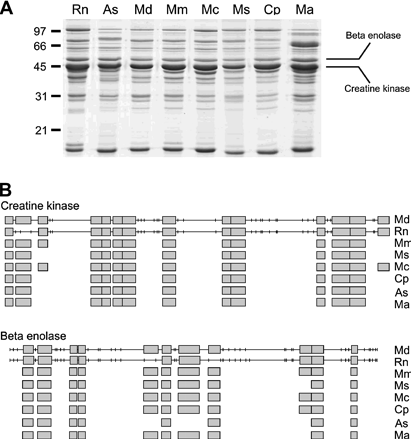Seminal vesicle protein evolution

Ramm, S.A., McDonald, L.M., Hurst, JL., Beynon, R.J. & Stockley, P.S. (2009) Comparative Proteomics Reveals Evidence for Evolutionary Diversification of Rodent Seminal Fluid and Its Functional Significance in Sperm Competition. Mol. Biol. Evol. 26, 189-198 [PUBMED] [PDF] [SUPP]
During insemination, males of internally fertilizing species transfer a complex array of seminal fluid proteins to the female reproductive tract. These proteins can have profound effects on female reproductive physiology and behavior and are thought to mediate postcopulatory sexual selection and intersexual conflict. Such selection may cause seminal fluid to evolve rapidly, with potentially important consequences for speciation. Here we investigate the evolution of seminal fluid proteins in a major mammalian radiation, the muroid rodents, by quantifying diversity in seminal fluid proteome composition for the first time across a broad range of closely related species. Using comparative proteomics techniques to identify and cross-match proteins, we demonstrate that rodent seminal fluid is highly diverse at the level of both proteomes and individual proteins. The striking interspecific heterogeneity in seminal fluid composition revealed by our survey far exceeds that seen in a second proteome of comparable complexity, skeletal muscle, indicating that the complement of proteins expressed in seminal fluid may be subject to rapid diversification. We further show that orthologous seminal fluid proteins exhibit substantial interspecific variation in molecular mass. Because this variation cannot be attributed to differential glycosylation or radical differences in termination sites, it is strongly suggestive of rapid amino acid divergence. Sperm competition is implicated in generating such divergence for at least one major seminal fluid protein in our study, SVS II, which is responsible for copulatory plug formation via transglutaminase-catalyzed cross-linking after insemination. We show that the molecular mass of SVS II is positively correlated with relative testis size across species, which could be explained by selection for an increased number of cross-linking sites involved in the formation of the copulatory plug under sperm competition.
